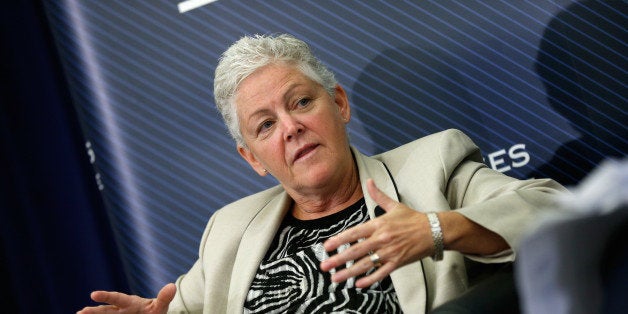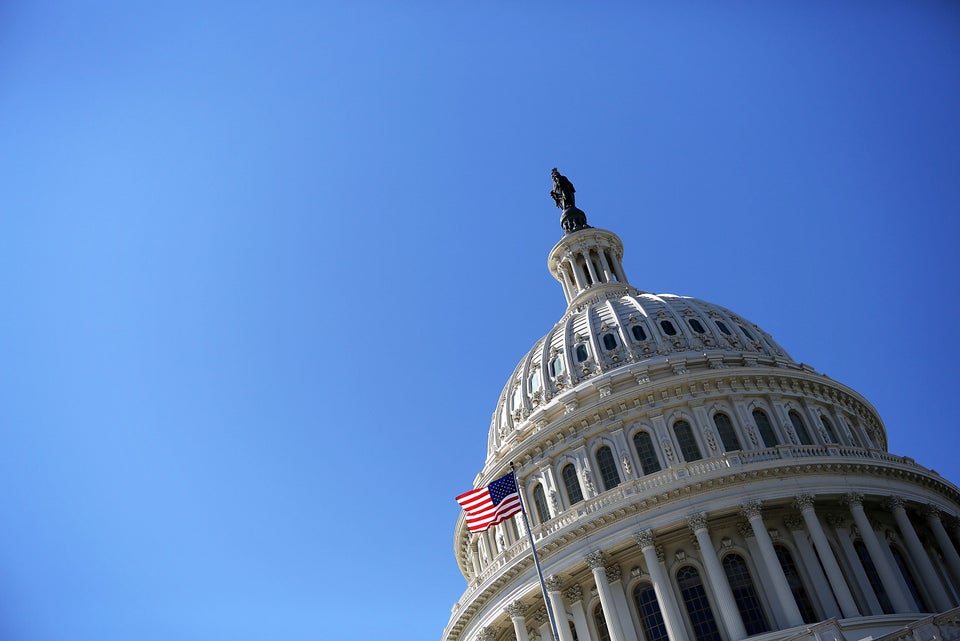
WASHINGTON -- The Environmental Protection Agency and the U.S. Army announced a new rule on Wednesday clarifying what types of water bodies the government can protect from pollution.
The Clean Water Rule is intended to add some clarity to two Supreme Court decisions, from 2001 and 2006, that produced confusion over what waters the EPA can regulate under the Clean Water Act, the federal law governing the regulation of water pollution in the United States.
The new measure says the federal government has jurisdiction over tributaries that show physical features of flowing water as well as water that is within a certain proximity to rivers, lake and tributaries.
Jo-Ellen Darcy, assistant secretary of the Army for civil works, said Wednesday in a call with reporters that for the first time, there are now "physical, measurable limits" on covering bodies of water close to those that are protected by the Clean Water Act. Under the new rule, an adjacent body of water is protected if it is within what is known as the 100-year flood plain -- or an area that has a 1 percent chance of flooding each year -- but is not more than 1,500 feet from a waterway covered under the Clean Water Act. The measure will not apply to formations like ditches, where there is not a consistent flow of water.
"The final rule doesn’t create any new permitting requirements for agriculture, maintains all previous exemptions and exclusions, and even adds exclusions for features like artificial lakes and ponds, water-filled depressions from construction, and grass swales -- all to make clear our goal is to stay out of agriculture’s way," Darcy and EPA Administrator Gina McCarthy wrote in a blog post.
The new rule will apply to 60 percent of waters in the United States, people familiar with the measure told The New York Times.
President Barack Obama said the Clean Water Rule would help make sure polluters are held accountable for their actions.
"One in three Americans now gets drinking water from streams lacking clear protection, and businesses and industries that depend on clean water face uncertainty and delay, which costs our economy every day. Too many of our waters have been left vulnerable to pollution," he said in a statement. "This rule will provide the clarity and certainty businesses and industry need about which waters are protected by the Clean Water Act, and it will ensure polluters who knowingly threaten our waters can be held accountable. "
Many environmental groups were quick to praise the measure.
"This is a historic day that all sportsmen should welcome," Whit Fosburgh, president and CEO of Theodore Roosevelt Conservation Partnership, said in a statement. "Nearly 15 years after legal confusion contributed to the first accelerated loss of waterfowl habitat in decades, we finally have a rule in place that will help stem the tide of wetlands loss and definitively restore water quality protections to trout habitat and salmon spawning waters. We want to commend the administration for making this long-anticipated day a reality."
Navis Bermudez, deputy legislative director for the Southern Environmental Law Center, said the new rule would protect Americans' tap water.
"We applaud the administration for standing up for the millions of Americans, more than one-third of the population, whose drinking water quality has been at risk for pollution without this rule," Bermudez said in a statement.
Since the rule was proposed last spring, it has drawn criticism from congressional Republicans who say it infringes on the rights of private property owners.
"Instead of reaching a reasonable solution, today the EPA has ignored millions of Americans and taken more control over private land in our country. There is bipartisan agreement that Washington bureaucrats have gone beyond their authority and have no business regulating irrigation ditches, isolated ponds and other 'non-navigable' waters as waters of the United States," Sen. John Barrasso (R-Wyo.) said in a statement on Wednesday.
Sen. Jim Inhofe (R-Okla.), chair of the Senate's Environment And Public Works Committee, criticized how sweeping the rule is.
"Despite their assurances, it appears that EPA and the U.S. Army Corps of Engineers have failed to keep their promises to Congress and the American people," he said. "In fact, instead of fixing the overreach in the proposed rule, remarkably, EPA has made it even broader."
The House has also passed legislation to block the rule and the Senate is considering legislation that would require the EPA to change the rule.
McCarthy told reporters on Wednesday that the EPA had done extensive public outreach and gotten over 1 million comments on the proposed rule. Critics have questioned whether the EPA's lobbying effort to earn support for the bill went too far.
But Brian Deese, a senior adviser to the president, said the rule could actually benefit farmers and other business owners.
"The status quo is rife with unsustainable confusion over what's protected and what's not. This rule provides the certainty that businesses and industry need to keep our economy going and this rule does it without getting in the way of farming, ranchers, foresters, and in fact giving them the potential to benefit from the certainty that this rule provides," he told reporters on Wednesday. "The only people with reason to oppose the rule are polluters who knowingly threaten our clean water."
The new rule would go into effect 60 days after it is published in the Federal Register.

